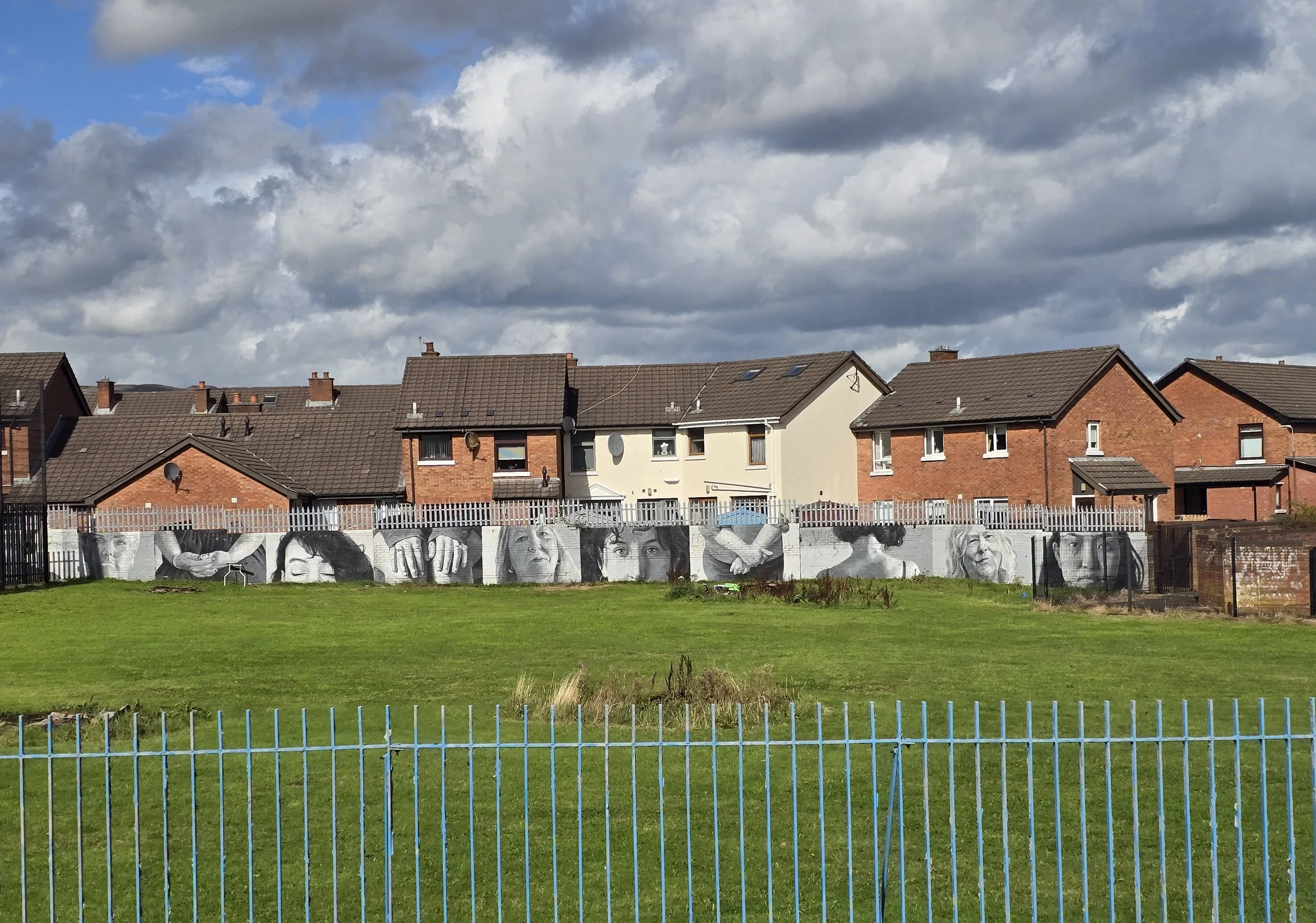What Visiting Northern Ireland is Really Like
Crossing from Letterkenny, Ireland, into Northern Ireland was so uneventful I almost missed it. No checkpoints, no soldiers, not even a sign. Only a subtle change in road markings and the occasional Union Jack gave it away. For someone who remembers the Troubles on nightly news broadcasts, the lack of barriers was the first sign of how much has changed.
Belfast: Beauty and Brutality
My first impression of Belfast was of a stately city. In Donegall Square, near a gleaming City Hall surrounded by gardens and statues, commuters rushed by, huddled under umbrellas in the drizzle.
I boarded a hop-on, hop-off bus for an overview of the city. Downtown, the guide started by saying the Good Friday Agreement in 1998 eased tensions, but history hasn’t disappeared. He described “Bloody Friday” in 1972, when the IRA detonated over 20 bombs across the city—bus and train stations, shops, pubs, and a post office. The explosions killed nine people and injured over 130. He pointed out some buildings the IRA had targeted, but few physical reminders still exist.
When we arrived in West Belfast, the division between the two opposing groups was impossible to miss. Nationalists, predominantly Catholic, support a united Ireland. In their neighborhoods, murals depicted defiance, hunger strikers and Irish heroes. Unionists, primarily Protestant, want to maintain Northern Ireland's status as part of the United Kingdom. Union Jacks and tributes to Queen Elizabeth were prominent in their areas.
The Peace Walls, erected in 1969 as “temporary” barriers between the two sides, remain. Built of brick and corrugated iron, they were meant to prevent violence, but they became symbols of mistrust. For decades, the walls defined daily life. Children played in streets that ended at iron gates. At night, guards locked the gates, which shut off movement between neighborhoods. On each side of the wall were families who spoke the same language but lived in different worlds.
These days, the walls’ meaning has shifted. Murals and graffiti cover them. Many continue to tell the story of the Troubles, current political statements, portraits of Irish heroes, and tributes to Unionist causes. But along with those are messages of solidarity with conflicts around the globe. There are references to Gaza, Black Lives Matter, South African freedom struggles, and Ukraine. The walls have become canvases where local history intersects with international politics.
Some locals consider them scars and want to remove them. Other people deem them necessary safeguards. They are paradoxes: relic, canvas, and tourist attraction, all at once. For me, the walls were both sobering and hopeful. What struck me most was the contrast just a couple of blocks away. Teenagers lounged against walls with earbuds in, children kicked footballs, mothers pushed strollers. Life went on, ordinary and peaceful.
Conversations I had with locals further revealed the contrasts. A cab driver summed it up: “It’s quieter now, but people still know where they belong.” Later, in a seaside café, an older couple invited me to share their table. They spoke warmly about family and community, but their reflections turned serious. “We’ve seen it all,” the man said, stirring his tea. “What we want now is for the young ones to grow up without the fear we had.”
What It Means to Visit
For me, Northern Ireland was never just another stop on a map. It was a place I’d grown up seeing through the lens of violence, smoke, sirens, and armored vehicles. Walking its streets as a tourist, I carried those images with me, and that made what I found even more powerful.
Yes, the scars are there: the walls, the murals, the lingering divides. But so are the smiles, the easy warmth of strangers, the humor, the generosity. I felt welcomed everywhere, not wary.
Traveling there meant holding two truths at once: the weight of history, and the lightness of everyday life. That is the essence of Northern Ireland. For visitors, it is not just castles and coastlines, but a chance to see history still alive and to be surprised by how warmly a complicated place can embrace you.
Weeks after my trip I keep thinking about Northern Ireland. It is divided and united, beautiful, heavy with history, yet light with possibility. And that is exactly why it’s worth visiting.










